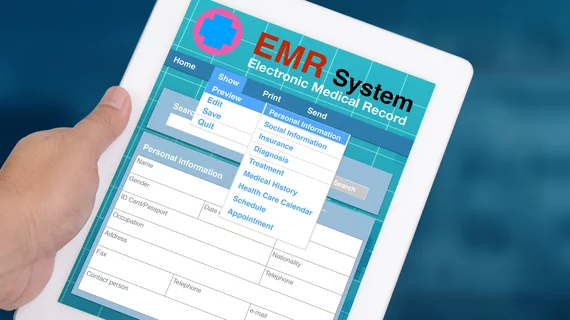5 steps to assess safety of a health system electronic health record
Researchers with University of Texas UTHealth Houston outlined five steps for clinicians to assess their electronic health records (EHR) using the SAFER guidelines. The study was published in the Journal of the American Medical Association (JAMA).[1]
In August 2021, the Centers for Medicare and Medicaid Services (CMS) released a final rule requiring eligible hospitals to attest annually that they performed a safety assessment of their EMR system using SAFER (Safety Assurance Factors for EHR Resilience) Guides. This affects virtually all U.S. hospitals, but there is no specific guidance on how hospitals should perform a self-assessment of these recommended practices. To address this gap, UTHealth Houston researchers developed pragmatic guidelines to provide a streamlined, stepwise approach for conducting a systematic EHR safety assessment that optimizes organizational resources, minimizes process inefficiencies, and maximizes EHR vendor involvement.
“Organizations that follow these guides should have a much safer and more efficient EHR,” said Dean Sittig, PhD, professor at UTHealth Houston School of Biomedical Informatics.
The SAFER Guides were developed in 2014 by Sittig and Hardeep Singh, MD, MPH, a professor of medicine at Baylor College of Medicine and researcher at the Center for Innovations in Quality, Effectiveness and Safety and Michael E. DeBakey VA Medical Center. It consists of nine guides that each fall within three different categories.
Through comprehensive review and study, Sittig and Singh crafted concrete assessments that focus on reducing as many safety risks as possible. “The guidelines for using the SAFER Guides presented in the JAMA article are the result of years of work by many people across multiple organizations,” Sittig said.
Within the paper, the co-authors outline suggest healthcare organizations include build a SAFER team, determining what recommendations need EHR vendor support, bringing the team together to track progress, documenting and communicating about the status of implementation, and finally, prioritizing unmet recommendations to make needed changes.
Because the CMS rule impacts almost all hospitals, the researchers understand how impactful the assessment steps are in enhancing clinical safety practices.
“We think of the SAFER Guides Assessment as a major step in a hospital’s journey towards high reliability health care” said Singh. “Hospitals should also provide assessment results to their governing board and engage them in EHR safety improvement efforts.”
Patricia Sengstack, DNP, with Vanderbilt University School of Nursing is an additional author on the study.
Reference:
